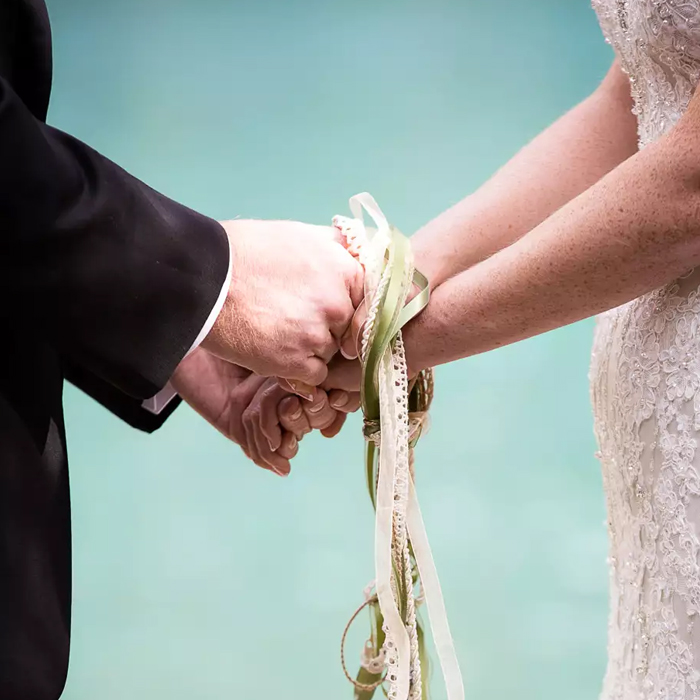SAND RITE

The origins of the sand ritual are very old and can be traced back to the Native American tribes and, according to some, also to the Hawaiian tribes, peoples who married on the sand and not in sacred buildings like modern churches.
The sand ritual involves the bride and groom simultaneously pouring sand of different colours into a third, larger jar through two jars. The sand thus amalgamates, creating suggestive waves of colour to represent the future life together, the union of souls that begins the moment one becomes husband and wife. The bride and groom can then seal the vase with the lid and keep it at home, to always remember the promise made, especially when routine and everyday life shake their certainties.
The sand ritual represents the essence of marriage: separate lives united forever, but also souls that, while connected, retain their individuality. The rite of sand is a beautiful metaphor for the life of a couple because it captures the spirit of being together, being bound but remaining oneself, promising eternal love and making a serious commitment.
If the couple already has children they too can participate, just use different coloured sand for each member of the family, the final vase will symbolise life together. It also lends itself well to major anniversaries such as 50 years of marriage: it is a very romantic way to renew promises without organising a full-fledged ceremony.





